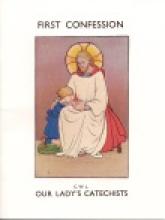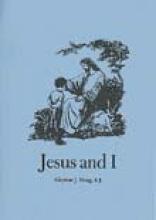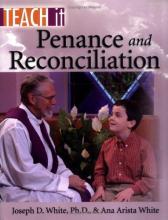First Confession
First Confession
Companion to First Communion from Our Lady's Catechists.
In twelve lessons, this little book teaches everything that an elementary-school-aged child needs to know to prepare for a holy First Confession. The text is written in the second person, for the teacher to read to the student, and assumes no exceptional degree of teaching experience. Most of the lessons use short stories to illustrate the point being made. A homeschooling parent can simply pick up the book, sit down with their student, and spend their lesson time comfortably and profitably.
Lessons describe what sin is, how sins are taken away, how to stir up contrition, how to tell our sins and make satisfaction for them, how to identify our sins, as well as how to avoid sin. Also included is the correct manner in which to confess and short prayers for before and after confession. The prayer pages are designed for the student to read and are printed in a larger font with a simpler vocabulary. The penultimate page is titled "Revision", but the more familiar American term is "Review". This page contains a complete review with answers that is more concise and direct than memorizing lengthy catechism questions. The inside back cover includes teaching notes for several of the lessons. In use for nearly fifty years, the information and teaching style of this book is timeless and applies equally well to our modern times. Charming full-color illustrations appear throughout the book.
Jesus and I
Jesus and I is organized into very short lessons that lend themselves to direct, oral teaching and discussion. It is designed to be used BY the teacher WITH the student, not by handing the book to the student to read and fill in answers by himself. The book begins with several pages of prayers that we should know by heart. The lesson titles are phrases from these prayers, and the lesson content explains that particular phrase. For example, the lesson titled "Angel of God, my guardian dear" explains Catholic teachings on angels. The lesson titled "And blessed is the fruit of thy womb, Jesus" explains the Incarnation. As the children memorize their prayers, they are also being taught what the prayers mean.
Each lesson begins with a narrative written in simple, short sentences. This is followed by the "How Many Can You Answer?" section of questions for the youngest students. Next are the "Can You Also Answer These?" questions for older students, which come from the First Communion Catechism in use when the book was originally written. The book ends with sections on "When I Go to Confession" and "When I Go to Holy Communion" followed by a summary of all of the First Communion Catechism questions.
1958 Imprimatur updated in 1978 with permission
Making Things Right - The Sacrament of Reconciliation
Teach It: Penance and Reconciliation
Designed to be used in Religious Education programs, this manual is also "homeschool friendly". First and foremost, it is faithful to the teachings of the Church, based on both the Catechism for the Catholic Church (1997) and the Holy Bible (Catholic Edition of the Revised Standard Version). Second, the authors emphasize in the Introduction that "a child's own parents occupy a special role in the formation of their children for the sacraments" (page 12) and they include practical means for getting parents more involved in a Religious Ed program. Finally, the majority of the educational activities in the book could be used just as easily in the home as in the classroom.
The manual is divided into 8 lessons: "God's Great Love", God's Rules for Living", "Sin and Conscience", "Baptism and Other Sacraments", "Forgiveness", "the Sacrament of Reconciliation, Part I", "Sacrament of Reconciliation, Part II", and "Living Reconciliation". Each lesson has a "Know It" section for the catechist, which summarizes Church teaching on the topic and presents information about the developmental level of children preparing for their First Confession (assumed to be around the age of reason, ages 6 or 7). The next section is "Teach It", with reproducible pages of practical teaching suggestions, games, crafts, and activities for the classroom. Finally, there's a "Share it" page, in both Spanish and English, which is a reproducible letter the catechist would send home to the parents.
Many of the "Teach It" suggestions involve movement and activity, ideal for kids at this age (especially little boys). For example, there are directions for acting out the story of the Prodigal Son, and for a "lost sheep" hunt in the classroom. Other "Teach It" ideas include small-motor activities such as coloring a small booklet about Baptism, and playing a matching game about the Seven Sacraments. I intend to use some of the exercises this year for my seven year old son as we prepare him for the sacraments.
Most of the suggestions combine good catechesis and age-appropriate work. However, in an attempt to present the Ten Commandments in a "form they [children] can understand" (page 30), the authors use an alternative translation, with an emphasis on the positive rather than the "shalt nots". For example, the Fifth Commandment is given as "Be kind to the people and animals God made" instead of the powerful and attention-grabbing "Thou shalt not kill". I'm not sure this is necessary; children are capable of learning the traditional version and then how it applies to their young lives (no hitting, no mean words, be kind, etc.) The other commandments are presented in a way that's closer to the traditional language (for example, "Tell the truth" for the 8th Commandment).
Overall, Teach It: Penance and Reconciliation does a good job of accurately presenting the truth about sin and forgiveness, with activities that take into consideration a small child's developmental level.
Imprimatur: John M. D'Arcy, Bishop of Fort Wayne-South Bend, 2003





